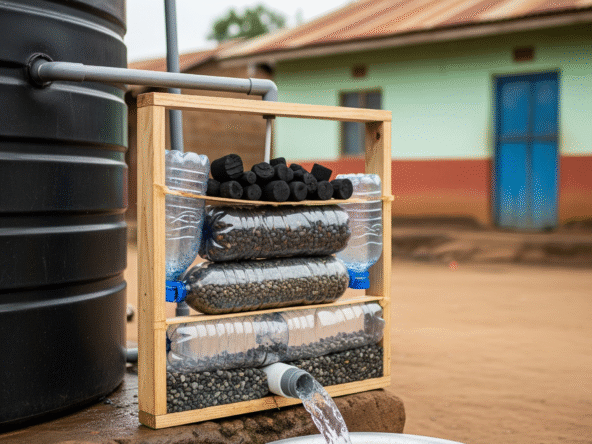With growing water demands and unpredictable supply across many Kenyan towns, multi-tank linking systems have become a practical solution for homeowners, institutions, and farms. Whether you’re harvesting rainwater, relying on municipal supply, or pumping from a borehole, linking tanks allows for scalable storage, easy expansion, and better redundancy.
This guide explores tank compatibility, common linking configurations, and real-world use cases for Kenyan properties plus the tools you need to build your system efficiently.
1. Why Use Linked Water Tanks?
Multi-tank systems are ideal if you:
- Have limited space for one large tank
- Want to separate sources (e.g. borehole vs rainwater)
- Need a scalable solution you can expand over time
- Want to avoid full system failure by spreading storage risk
- Need to mix tank types (plastic, concrete, underground)
Linked systems pair well with Rainwater Harvesting in Kenya where collection volumes vary and space is tight.
2. Tank Types That Can Be Linked
Nearly all tank types in Kenya can be linked, provided you use compatible fittings:
| Tank Type | Linkable? | Comments |
|---|---|---|
| Plastic tanks | ✅ | Easy to install, ideal for rooftops |
| IBC tanks | ✅ | Great for budget rainwater storage |
| Concrete tanks | ✅ | Need custom valves and access points |
| Steel tanks | ✅ | Require pressure management |
| Underground tanks | ✅ | Need pumps for elevation |
For more on durability and pricing, check out Top Water Tank Brands in Kenya
3. Common Linking Methods
a) Equalization (Bottom-to-Bottom)
Tanks are connected at the base so water levels remain equal. Best when using tanks of the same height and type.
b) Overflow Linking
Water from the main tank flows into the next one via an overflow pipe. Simple and excellent for rain-fed systems.
c) Sequential Pumping
Pumps move water from one tank to the next, often managed by float switches. Ideal for borehole or well-fed systems.
Combine with Automatic Tank Filling Systems for full automation.
4. Tools & Accessories Needed
To set up a multi-tank system, gather:
- Ball or gate valves (25–32mm)
- Threaded tank outlets
- HDPE or flexible PVC pipes
- T-joints, elbows, reducers
- Tank stands or concrete slab bases
- Optional: Non-return valves, booster pump
5. How Many Tanks Should You Link?
| Use Case | Suggested Setup |
|---|---|
| Single person or couple | 2 × 1000L plastic tanks |
| Medium family (4–6) | 2 × 2000L or 1 × 5000L + 1 × 2000L |
| Estate or farm | 3–4 × 5000L to 10000L tanks |
| School/clinic | 1 underground + 2 elevated poly tanks |
Need buried options? See Underground Water Tank Construction.
6. Design Considerations for Kenya
- Place tanks at same elevation for smooth balancing
- Use non-return valves to avoid backflow issues
- Place tanks close together to minimize piping runs
- Label inlets for different water sources
- Use booster pumps for high-pressure applications
Learn more in Water-Saving Fixtures and Plumbing Tips
7. Where Multi-Tank Systems Work Best
These setups are increasingly common in:
- Urban areas like Syokimau, Ruiru, and Joska
- Farms and greenhouses needing irrigation flexibility
- Rental properties managing multiple households
- Schools and dispensaries for backup supply
They also pair well with Outdoor Kitchens and Extensions where water is needed in multiple locations.
Multi-tank linking is one of the smartest, most adaptable water storage systems for Kenyan properties today. From 500-litre tanks for single users to 10,000-litre setups on rural farms, these systems offer:
- Better water control
- Scalable storage
- Lower risk of total failure
- Easy integration with automation and rain collection
Explore more related topics:


